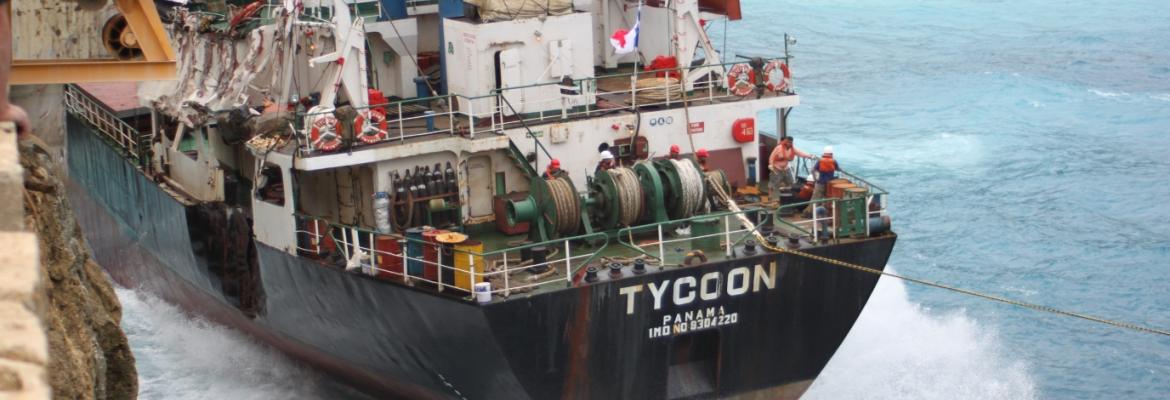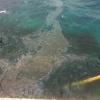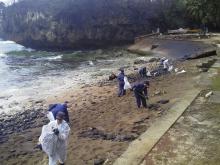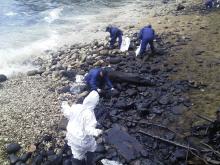
Around 7 am on 9 January 2012 (Christmas Island time) the MV Tycoon had broken in half, consequently sinking adjacent to the cliff and the crane at Flying Fish Cove.
The MV Tycoon was carrying approximately:
- 102 tonnes of intermediate fuel oil
- 11,000 litres of lubricant oil
- 32 tonnes of diesel oil
- 260 tonnes of phosphate.
It is believed the majority of the oil on board leaked quickly and dissolved in the heavy sea conditions into the local water column, washing up on nearby beaches or floating out to sea.

Oil in water beside MV Tycoon – AMSA
The crew were all recovered with the assistance of the Royal Australian Navy and the Australian Federal Police.
The National Plan was activated and a marine pollution response incident coordinator and a casualty coordinator from the Western Australia Department of Transport, appointed by AMSA under National Plan arrangements, arrived on Christmas Island on 9 January 2012.
AMSA worked closely with the Christmas Island Emergency Management Committee, which includes Parks Australia employees.
Clean-up of the spilled oil proved to be challenging during the swell season. However, the rough weather assisted in naturally dispersing much of the leaked oil into deeper waters offshore.
Although heavy weather restricted clean-up operations and regularly prevented clean-up teams from venturing on to the beach for safety reasons, a large contingent of volunteers assisted with:
- the beach clean-up
- waste removal
- traffic control
- general operations.
Six AMSA personnel and six National Response Team personnel from Western Australia and South Australia assisted at various times on the island, undertaking casualty/salvage management and pollution response related tasks.
Sporadic re-oiling of the beaches continued as the vessel was impacted by varying weather and sea conditions, requiring ongoing involvement of the National Plan until 17 February, when local control was delegated. During this time further discharges were very limited and most efforts focused on oiled debris removal.
Outcome
The final AMSA deployment was able to complete the beach clean-up using heavy machinery for eight days. Local support throughout the response was overwhelmingly positive.
On 16 April, after the owner failed to take responsibility for the wreck, AMSA formally announced the government’s decision to manage the wreck removal operation.

Beach clean-up crew at Flying Fish Cove – AMSA

Beach clean-up crew at Flying Fish Cove – AMSA